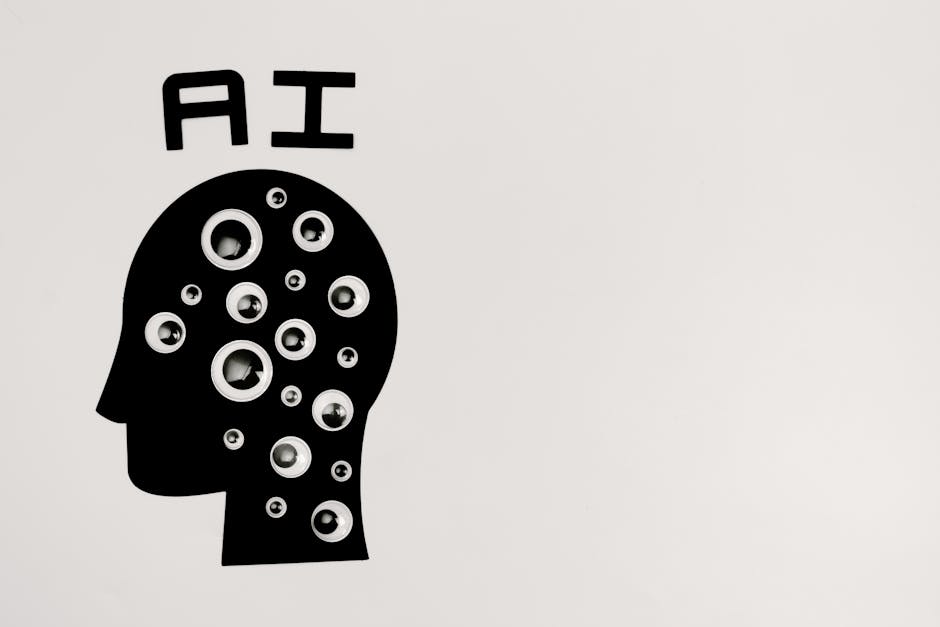From Surveys to Real-Time Signals: The Shift in Consumer Research
Traditional Research: What’s No Longer Working
Classic consumer research methods—think focus groups, surveys, and interviews—have long been the go-to for brands looking to understand their audience. But in today’s digital world, these approaches are falling behind in several key areas:
- Slow feedback loops: Traditional methods often take weeks (or months) to yield results.
- Small sample sizes: Focus groups and surveys capture limited perspectives that may not represent broader trends.
- Self-reported data: Responses can be biased or inaccurate, depending on what participants think researchers want to hear.
- Static insights: By the time results are analyzed and acted on, consumer behavior may have already shifted.
The Need for Real-Time Behavioral Insights
Modern consumers are constantly connected, sharing their preferences, frustrations, and interests in real time across digital platforms. This presents a massive opportunity—and challenge—for researchers and brands alike.
What’s needed today:
- Scalability: Insights that reflect data from thousands to millions of interactions.
- Speed: The ability to capture, filter, and interpret signals instantly.
- Behavioral focus: Actions speak louder than words—what users do matters more than what they say.
- Adaptability: Insight systems that can continuously evolve with consumer behavior.
Enter AI: A New Era of Consumer Understanding
Artificial intelligence is transforming how we collect and interpret consumer insights. It’s not just a faster engine—it’s a smarter one. Here’s how AI is changing the game:
- Automated data collection from social media, websites, search history, and digital footprints.
- Pattern recognition that reveals emerging trends before they spike.
- Predictive analytics to forecast consumer behavior and sentiment shifts.
- Natural language processing (NLP) to analyze conversations, reviews, and open-ended feedback at scale.
In short, AI enables researchers and brands to:
- React quickly to market changes
- Anticipate customer needs
- Adapt messaging and offerings in real time
Traditional methods still have value—but they’re no longer enough. AI isn’t replacing human insights, it’s enhancing them by providing a dynamic, data-driven foundation for better decisions.
AI isn’t just helping vloggers edit their videos faster—it’s reshaping how they understand their audience. New AI-powered tools can now track online behavior across multiple devices, connecting dots between what people watch, search, buy, and even pause on. It’s no longer just about views and clicks; it’s about patterns.
Sentiment analysis pushes this a step further. Vloggers can now parse not just what viewers are saying, but how they feel about it. Are comments positive with real excitement, or heavy on sarcasm? Are likes consistent, or just driven by hype? These insights tell creators what’s working at a gut level—valuable for building content that connects.
Forget focus groups and clunky surveys. AI can scrape thousands of social media posts, sift through review threads, subreddits, and replies, and surface common themes in minutes. This kind of speed and depth means vloggers can pivot fast—testing new formats, jumping into trends, or even pulling back when something’s off. It’s not a crystal ball, but it’s close.
In 2024, understanding your audience stops being a guessing game. The tech is here. The question is what creators will do with it.
AI isn’t just editing videos now—it’s reading the market before anyone else knows what’s coming. Machine learning is digging into behavioral data: watch time, click patterns, comment sentiment, even the order someone browses content. From that, it can spot buying patterns weeks before they hit mainstream awareness.
What looks like chaos to a person—fifty people suddenly buying hiking boots after watching minimalist packing vlogs—is legible to an algorithm. These are micro-shifts. Not loud enough for a trend report, but clear signals that something is forming. For vloggers, this means staying ahead of the demand curve by tailoring content to match subtle spikes in interest.
The next level? Intent forecasting. AI can now suggest not just who might like a product, but who’s ready to buy it—today. By layering context from search queries, past behavior, and even time of day, the system predicts when viewers are in decision mode. Vloggers who plug into that timing—dropping the right review or product link at the exact right moment—stand to benefit the most.
In 2024, intuition is good. But informed timing, powered by AI, is better.
Gone are the days when targeting viewers meant relying on age, gender, or location. In 2024, behavior beats demographics. Platforms are watching what users click, how long they stay, when they drop off, and what they come back to. That data feeds real-time segmentation—meaning two people with the same basic profile can experience totally different content journeys based on how they engage.
Behind the scenes, AI is pulling the strings. It analyzes behavior patterns and pushes tailored content recommendations in the moment. Not tomorrow. Not later today. Now. For vloggers, this means leaning into formats that hold attention early and often—otherwise, you’re out of the loop. Algorithms reward content that adapts fast, hits specific curiosities, and keeps viewers stitched into their own personal feed rabbit hole.
This shift is making vlogging more like a one-on-one conversation than a stage show. The audience doesn’t just watch—they interact, click, skim, pause, rewatch—and all of that data fuels how platforms serve your next upload. Ignore it, and your content quietly disappears into the noise. Embrace it, and you’re on a direct line to the people you’re actually making this stuff for.
AI Knows What Your Audience Feels—And Uses It
The shift isn’t just about AI helping creators move faster. It’s about AI understanding audiences better than ever before. Chatbots and virtual assistants are quietly collecting data on when people pause, rewatch, click away, or lean in. That data isn’t being wasted—it’s feeding learning systems that decode viewer habits in ways most creators can’t see on the surface.
Visual recognition is now catching micro-expressions mid-video. Smiles, eye movement, even frustration—it’s all part of the new feedback loop. The systems behind the scenes turn that into actionable insights. It’s not sci-fi. It’s already shaping how videos are suggested, where content gets slotted, and what keeps people coming back.
Vloggers are starting to plug these insights into CRMs and emails to customize outreach. Even product design is getting a feedback bump from AI’s read on fan sentiment. It’s deeper than views or likes now—it’s behavioral storytelling at scale.
For more on how emerging voice technologies tie into this, check out The Rise of Voice Search and What It Means for Marketers.
Navigating the Line: Personalization, Privacy, and AI Bias
Personalization vs. Intrusion
As AI tools become more embedded in content creation and audience targeting, creators face an ongoing tension: when does helpful personalization cross into viewer discomfort? Understanding the difference can protect both your relationship with your audience and your brand integrity.
- Personalization done right helps viewers feel seen and understood
- Overpersonalization can feel manipulative or creepy, especially when data collection isn’t transparent
- Creators should prioritize consent, clarity, and value in how they use data
The Hidden Bias in AI Insights
AI tools—whether suggesting content or analyzing viewer behavior—are only as good as the data they’re trained on. And much of that data comes with baggage.
- Training data often reflects skewed demographics, leading to blind spots
- Algorithmic bias can amplify stereotypes or overlook niche audiences
- Relying exclusively on AI insights risks missing the nuance of your real-world community
Why Human Oversight Still Matters
Technology should enhance your creative intuition, not replace it. Human judgment plays a critical role in making sure AI-generated insights are interpreted ethically and usefully.
- Determine whether data “truths” actually align with your audience’s lived experience
- Question AI-driven recommendations that don’t align with your creative direction
- Treat AI as a tool for insight—not absolute answers
Bottom Line: In 2024, successful vloggers will blend smart technology with conscious storytelling. Being data-informed is powerful—but staying human-first is essential.
From Reactive to Predictive: The Smart Vlogger’s Edge
For years, many vloggers operated in reactive mode—chasing trends after they happened, posting content based on gut instinct, and hoping the algorithm smiled on them. That’s changing fast.
In 2024, the smart creators are thinking ahead. By analyzing user behavior, watch patterns, and comment sentiment, they’re predicting what will resonate before it hits. Tools that used to be reserved for big brands—AI-driven analytics dashboards, funnel mapping, audience heatmaps—are now part of a solo vlogger’s daily kit.
This kind of data-driven foresight isn’t just about views. It’s helping streamline the customer journey, from the first touchpoint (say, a short tease on Reels) to a deeper YouTube series or a paid course down the line. It’s smoother, clearer, and more intentional.
The end goal? Building loyalty that lasts. When content feels personal and consistently delivers what viewers want—before they even know they want it—trust builds. It’s no longer about just showing up. It’s about showing up with a plan rooted in real insights and actual empathy.
AI Isn’t Replacing Marketers—It’s Making Them Sharper
Forget the doomsday headlines—AI isn’t stealing marketer jobs, it’s sharpening their edge. Creators who embrace machine learning tools aren’t trying to hand off their voice; they’re using AI to test faster, think clearer, and work smarter.
From real-time analytics dashboards to AI-driven content prompts, the best tools do one thing well: deliver clarity. Not vanity metrics. Not noise. Just clean, actionable insight into what content hits, how your audience moves, and where your next bet should land.
Consumer behavior isn’t static. People are watching differently, skipping faster, and making decisions on the fly. Your strategy can’t be stuck in last year’s playbook. To stay relevant in 2024, let AI help you adapt—not take over.


 Kelvino Emrichester brought technical expertise and innovative ideas that greatly influenced the growth and functionality of FLP Stampive. His work focused on optimizing the site’s user experience, implementing smooth navigation, and enhancing digital performance to create a seamless space for marketers and readers alike. Combining a practical mindset with a creative edge, Kelvino’s contributions helped transform FLP Stampive from concept to a polished, high-performing platform dedicated to delivering valuable marketing insights.
Kelvino Emrichester brought technical expertise and innovative ideas that greatly influenced the growth and functionality of FLP Stampive. His work focused on optimizing the site’s user experience, implementing smooth navigation, and enhancing digital performance to create a seamless space for marketers and readers alike. Combining a practical mindset with a creative edge, Kelvino’s contributions helped transform FLP Stampive from concept to a polished, high-performing platform dedicated to delivering valuable marketing insights.